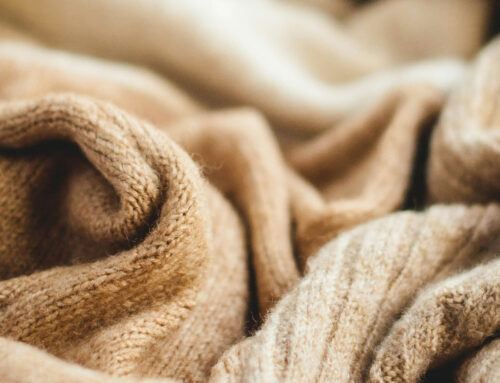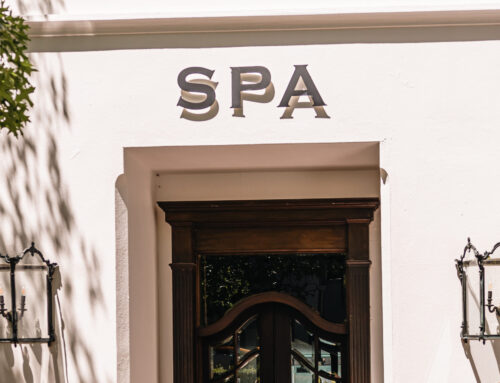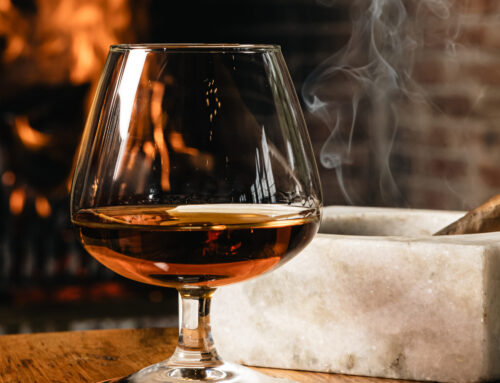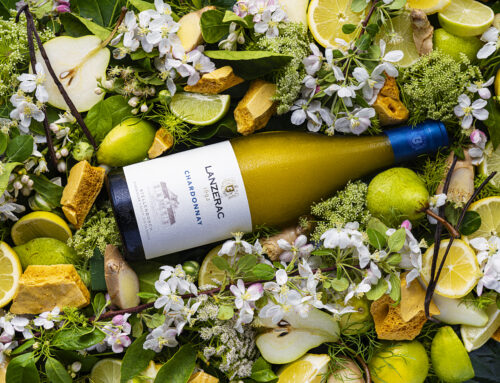In the mood for an unforgettable afternoon tea experience this winter?
Lanzerac shares how to host the perfect party.
Polly, put the kettle on. We’ll all have tea!
A Little History On Afternoon Tea
Afternoon Tea’s history is steeped in mystery, but many believe the origin of Afternoon Tea and High Tea can be traced all the way back to England in the late 1800s.
During this era “dinner” was a meal typically consumed at around eight or even nine o’clock at night, while lunch would already have been consumed hours earlier, at about midday.
Being hard-working 19th century lads and lasses, legend has it people simply became so famished or parched between the two meals, lunch and dinner, that they took the liberty of inserting another, smaller meal in-between the two and called it Afternoon Tea.
The Duchess of Bedford, in fact, is believed to have started the trend, and was known for taking tea and light snacks in the afternoon to combat what she described as a “sinking feeling” in her stomach that routinely occurred after lunch and before dinner was ready.
As a sociable lady of the age, the Duchess began inviting her friends round to enjoy her tea and treats in the pleasure of one another’s company and word got around – the Duchess of Bedford was onto something!
Soon, Afternoon Tea became a part of every sophisticated 19th century individual’s vocabulary.

So, is Afternoon Tea the same as High Tea?
The Duchess’s version of afternoon tea was not identical to what polite society called High Tea at the time.
During that era, High Tea referred to a heavier meal eaten at the end of the work day by the working classes.
This meal was typically consumed standing at a high table – hence the name “High Tea”.
Today, however, High Tea and afternoon tea are typically used interchangeably to refer to the same typically social occasion of consuming tea and treats in the later afternoon.
What is the perfect time to enjoy an Afternoon Tea?
These days, High Tea is typically served at 4 o’clock in the afternoon, while Afternoon Tea is not necessarily as rigidly bound to time.
Afternoon Tea at Lanzerac, for example, is served from 2 o’clock in the afternoon until 5 o’clock.
Best Practices for Afternoon Tea Attendance & Hosting
Be Our Guest
If you’ve been invited to tea, whether to celebrate a birthday or a baby shower, be it hosted in someone’s home or at a local hotel, or wine estate, there are certain rules of etiquette you should acquaint yourself with first lest you commit an accidental tea faux pas!
First and foremost, respond to the invitation to tea in writing!
Whether this means sending a text message, or returning an RSVP card, responding to the invitation in writing allows your host to refer back to your previous correspondence to confirm your attendance should they not be able to access and mark your attendance on their guest list immediately.
If you call your host and accept the invitation, but your host does not have their guest list handy, your response may be accidentally overlooked – to avoid unnecessary back and forth, reply in writing from the get go; it saves time.
Secondly, keep your word.
If you RSVP “yes”, don’t be discourteous and decline to show up for tea without due cause.
Obviously, life happens, however, in the event you can no longer attend tea you should let your host know as soon as possible.
Similarly, if you RSVP “not attending”, don’t just show up to tea – you will not have been catered for, and this will be embarrassing for all involved.
If you had to decline the invitation originally but now find yourself able to attend at short notice, contact your host and ask them if accommodations can still be made for you to attend.
If not, unfortunately it would be best for you to sit this one out, rather than embarrass your host by showing up unaccounted for.
Finally, don’t pile your plate too high – Afternoon Tea is not supposed to be a meal, but a snack.
You want to whet your appetite, not indulge yourself to satiation.
Most of the fare being served will be finger foods, and at more casual teas, consuming your treats with your hands is perfectly acceptable – take your cue from your host on this one.

Dressed to Impress
Whether you’re the host or a guest, you want to strike the right tone with your outfit for tea.
Take your cue from the invitation and the setting.
If tea is being hosted at home, presumably the attire called for will be significantly more casual than if tea is being held, for example, in a 5-star hotel.
High Tea and Afternoon Tea at such an establishment typically calls for smart casual attire at least – think tea-length floral dresses and kitten heels.
What better excuse than a sophisticated Afternoon Tea to break out your favourite party frock?
The Hostess with the Mostest
Hosting your first tea party can seem daunting, but there are a couple of tips we can offer you for acing it the first time around!
First of all, served your tea from tea-pots.
Never serve guests individual tea bags in their cups, and never serve tea in a mug!
Tea should be served in a teacup with a matching saucer.
Ideally, each guest should have their own trio consisting of a matching teacup, saucer, and small cake plate off which to enjoy their treats.
A small cake fork and small teaspoon should also be available at each place setting.
Don’t forget that tastes differ – offer your guests a variety of different teas to suit their individual tastes.
Print up little name cards to adorn your pot-warmers so that guests can tell at a glance which tea is which and be served accordingly. On that note, Afternoon Tea needn’t consist of solely sweet, or solely savoury treats – cater to your audience.
A balanced Afternoon Tea menu may feature a selection of savouries, including things like finger sandwiches and assorted amuse bouche, as well as a selection of miniature sweet favourites like macarons, cheesecakes and cupcakes.
Does hosting your own Afternoon Tea still sound like too big a task?
Thankfully, leaving it to the experts is a feasible option!
With an affordable Afternoon Tea offering right here at Lanzerac, you don’t need to worry about getting it right yourself if you don’t want to!
To book a table for your event, simply call us up, throw on your cutest outfit and come and enjoy Afternoon Tea with us in true Lanzerac style.
We look forward to welcoming you and yours with a perfectly chilled glass of Lanzerac Methode Cap Classique soon!

Tea Party Etiquette 101
Pinkies up when drinking tea?
Are finger foods actually meant to be consumed by hand, or do you use a cake fork?
Do you pour your own cup of tea or do you wait to be served?
We know that formal tea parties can be a minefield of potential etiquette faux pas, which is why we’re here to help!
Our simple tea party etiquette guide will prepare you to navigate even the most intimidatingly traditional tea party with grace, confidence and class.
From proper pinky placement to the correct way to prepare and eat your scone, we’ve covered all the basics so that you can be the talk of the tea party for all the right reasons!
Read on to learn all about the unexpected intricacies of tea party etiquette!
Eating Etiquette & Tips
Tea parties are about far more than just tea.
Tea time is prime time for delicate fancies you may not have encountered before, like macarons, assorted savoury or sweet-savoury bruschetta, or perfectly pastel-hued petit fours.
Let us take you through everything you need to know – from where to start indulging, to how to handle yourself when you try something new that ends up not to be to your liking – don’t worry, you don’t have to choke it down and force a smile!
Proper Scone Prep & Consumption
Believe it or not, there is a right way to eat a scone, and even a right way to prepare it for your own consumption.
Personal preferences have no place at a formal High Tea, and if etiquette is what you’re most concerned with allow us to educate you on what years of tradition have helped establish as the way to prepare and eat your scone!
- Step One: Break your scone in half or into quarters depending on the size – you’re aiming for bite-sized chunks. Never slice through your scone with your butter knife.
- Step Two: When it comes to buttering your scone, never dip your own butter knife into the butter! Use the additional small utensil provided to move enough butter to prepare your scone onto the side of your own plate and then use your butter knife to spread the scone with the butter from your own plate.
- Step Three: When the time comes for adding your choice of preserves, observe the same rules of never using your own utensils directly in the communal preserve jars. An additional small spoon per choice of preserve should have been provided by your host. Use this additional utensil to move as much preserve as needed onto your own plate before you use your own utensils to spread it onto your scone.
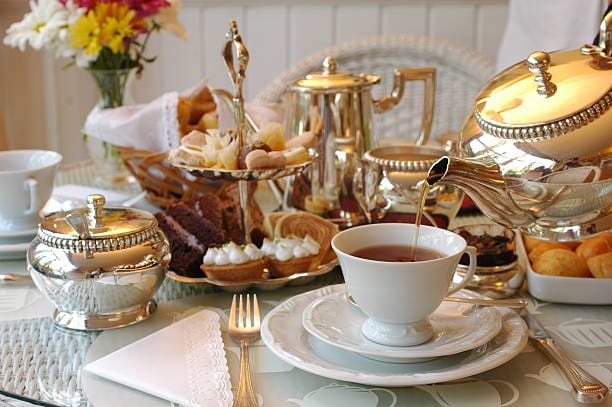
Dos:
- Do add jam and cream in whichever order you prefer. Technically each style has its own name and the correct way of spreading your scone varies by region. Jam first followed by cream is called Devon-style, while cream followed by jam is called Cornish-style. Do additional research into the norm for your region if you want to blend in!
- Pronounce it in whichever way comes naturally. Whether you rhyme “scone” with own, or with “gone”, there’s going to be somebody else at the tea party who agrees with your pronunciation. Typically the British English speakers rhyme “scone” with “gone”, while American English speakers favour rhyming “scone” with “own”.
- Return the table utensils (the communal spoons for preserves etc.) to their places on the table – they do not belong on your plate!
Don’ts:
- Never make a “scone-sandwich” by sticking your two halves back together with filling in the middle. This is a major faux pas!
- Don’t eat your scone with your cake fork! Scones are meant to be consumed by hand in single-bite-sized chunks.
- Prepare all your portions of scone in advance! Spread each bite-sized piece immediately prior to consumption.
Which came first, the tea sandwich or the scone?
Typical tea parties will follow the high tea model – the first course will be tea sandwiches, followed by scones, followed by desserts.
If all the courses are served buffet-style, avoid offending anybody or showcasing your relative inexperience by imposing this order on your own plate.
“I’ve never had smoked salmon before…”
We are of the opinion that everything should be tried once, but we also know that trying something for the first time in front of a group of people can be intimidating – especially if said group is putting pressure on you to enjoy the new food; whether because they made it themselves or because it is a personal favourite of theirs.
If you do decide to test the waters, take our advice and:
Do:
- Start with the tiniest of bites. That way, if you don’t like it, you have less to swallow!
- Leave the remaining portion on the side of your plate for the remainder of the tea party if you didn’t care for it.
Don’t:
- Spit the first bite into your napkin if you didn’t like it. This is vulgar.
- Force yourself to consume something you’re not enjoying – this will only insult your host and won’t be enjoyable for you.
Knife and Fork, or…?
In the case of tea sandwiches and scones, use your hands.
In the case of dry desserts that can be easily handled without making a mess (think macarons or biscuits), use your hands.
In the event a dessert is semi-solid or moist (think cheesecakes, lamingtons, etc.), employ your cake fork.
Proper tea party etiquette for the host, however, dictates that food be served which requires minimal use of utensils so, ideally, your cake fork will remain clean and purely decorative if it is present at all!

Proper Tea Drinking Etiquette
Tea, the quintessential ingredient of any tea party!
Consuming your tea correctly is an exercise in and of itself, but rest assured we’ll help you sip your way through afternoon tea like a pro!
Do:
- Keep your pinky down when drinking tea! Someone, somewhere started a rumour that raising the pinky helps you balance the teacup – this isn’t true! Rather than embarrass yourself or the individual who feels it their duty to correct you, keep your pinky in place instead of extended.
- Request your milk of preference if enjoying tea at a hotel or a restaurant. If enjoying tea in somebody’s home, rather than demanding your milk of choice, enquire as to what is available and choose from the available selection.
- Place your teaspoon on the side of your saucer when you’ve finished stirring your tea.
Don’t:
- Bang your spoon into the rim of your teacup when stirring. Stir gently and sparingly.
- Add the milk first.
- Serve yourself, unless instructed to do so by your host.
- Dunk your biscuits or scones.
- Slurp your tea or gulp it down.
- Blow on your tea in order to cool it down more quickly – wait until it has cooled adequately on its own before drinking it.
Be Merry and Enjoy every second
Socializing is an integral part of the tea party experience.
Always remember to take small sips and bites of your treats to avoid having a full mouth when called upon to contribute to the day’s conversation.
Do enjoy having high tea like a pro!
Concluding our Afternoon Tea
Need somewhere to practice your etiquette before sitting down to tea with an important figure?
Why not join Lanzerac for Afternoon Tea in the Manor Kitchen this winter – the perfect opportunity to get your chit chat and etiquette down pat while enjoying some of the finest teas and hand-made treats the Cape Winelands have to offer.
For more information or to make a reservation, feel free to contact us.
More interesting facts on Afternoon Tea:


